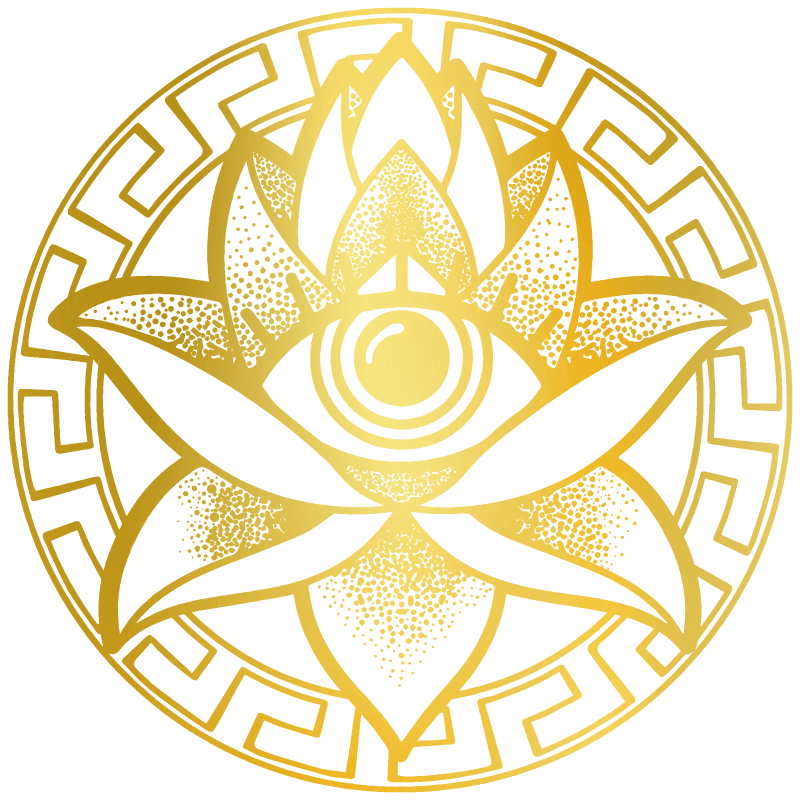The Blue Lotus (Nymphaea caerulea) has captivated human curiosity for centuries. Revered by ancient Egyptians as a symbol of spiritual awakening and serenity, this delicate aquatic flower is now gaining renewed attention in modern wellness circles. Beyond its calming properties, researchers and herbal enthusiasts are beginning to explore how Blue Lotus interacts with adaptogens and other botanicals, revealing fascinating synergies that amplify mood, focus, and holistic wellbeing.
What Is Blue Lotus? The Sacred Flower of Calm
The Blue Lotus, also known as the Egyptian water lily, is native to the Nile River and parts of East Africa. Traditionally, it was used in ceremonial practices for its mild psychoactive and euphoric effects, believed to induce a meditative state and enhance spiritual experiences. Today, Blue Lotus is typically consumed as tea, tincture, smoke blend, or infused oil, valued for its ability to promote relaxation, stress reduction, and lucid dreaming.
The key active compounds—nuciferine and apomorphine—are responsible for its unique action on the dopaminergic and serotonergic systems, influencing mood, motivation, and emotional balance. Unlike stronger psychoactives, Blue Lotus offers a gentle, balanced tranquility that pairs beautifully with other natural compounds.
Understanding Adaptogens: Nature’s Balancers
Before exploring the synergy, it’s crucial to understand what adaptogens are. Adaptogens are natural herbs and roots that help the body adapt to stress—whether physical, emotional, or environmental. They stabilize physiological processes and support the body’s return to equilibrium, making them ideal companions for botanicals like Blue Lotus.
Common adaptogens include:
-
Ashwagandha – Reduces anxiety, supports cortisol balance, and enhances sleep quality.
-
Rhodiola Rosea – Boosts energy, endurance, and cognitive performance.
-
Reishi Mushroom – Strengthens immunity, calms the mind, and supports longevity.
-
Ginseng – Improves focus, stamina, and immune resilience.
-
Tulsi (Holy Basil) – Reduces inflammation and promotes clarity.
Each adaptogen works through different biological pathways, but all share a common goal: resilience and balance.
Blue Lotus Meets Adaptogens: The Science of Synergy
When Blue Lotus is combined with adaptogens, the interaction can create a powerful state of harmonized calm and vitality—a unique blend of relaxation without sedation and alertness without anxiety. This synergy occurs because both target different but complementary neurotransmitter systems.
1. Blue Lotus and Ashwagandha: Calm Focus
Pairing Blue Lotus with Ashwagandha is ideal for those seeking stress relief without fatigue. Blue Lotus relaxes the mind through dopaminergic modulation, while Ashwagandha lowers cortisol levels and enhances GABA activity. Together, they create a deep sense of mental ease—perfect for meditation, creative work, or winding down after a long day.
Best format: Blue Lotus tea with Ashwagandha tincture or capsule.
2. Blue Lotus and Rhodiola Rosea: Energized Clarity
Rhodiola is a stimulating adaptogen that boosts ATP production and mental endurance. Blue Lotus, by contrast, smooths emotional turbulence. When combined, they produce balanced alertness—energizing without jitteriness, ideal for morning routines or demanding creative tasks.
Best format: Blue Lotus-infused tea paired with Rhodiola extract or powder.
3. Blue Lotus and Reishi Mushroom: Tranquil Immunity
The Reishi mushroom, known as the “mushroom of immortality,” complements Blue Lotus beautifully. Both promote calmness, emotional equilibrium, and gentle sedation, making this pairing ideal for nighttime rituals or anxiety management. While Reishi nourishes the immune system and adrenals, Blue Lotus nurtures emotional relaxation.
Best format: Reishi cacao drink or tincture followed by Blue Lotus tea before bed.
4. Blue Lotus and Ginseng: Cognitive Harmony
Ginseng enhances focus, stamina, and blood flow, while Blue Lotus subtly improves mood and emotional balance. Together, they promote mental harmony and sustained productivity—especially beneficial for individuals facing mental fatigue or burnout.
Best format: Blue Lotus tea in the afternoon with Panax Ginseng supplement.
5. Blue Lotus and Tulsi: Emotional Detox
Tulsi (Holy Basil) is an adaptogen revered in Ayurveda for its anti-inflammatory, antidepressant, and detoxifying properties. When blended with Blue Lotus, it creates a serene yet uplifting tonic that supports emotional cleansing, stress reduction, and spiritual clarity.
Best format: Blue Lotus and Tulsi tea blend or dual-extraction tincture.
How Blue Lotus Interacts with Other Botanicals
Beyond adaptogens, Blue Lotus also interacts gracefully with nootropics, nervines, and calming botanicals, amplifying their effects without overpowering them.
1. With Chamomile and Lavender
Combining Blue Lotus with chamomile or lavender enhances the flower’s soothing and sedative qualities. This blend promotes deeper relaxation, anxiety relief, and improved sleep—an excellent alternative to synthetic sleep aids.
2. With Damiana and Passionflower
For enhanced sensuality and mood balance, Blue Lotus with Damiana or Passionflower provides a synergistic lift. Damiana adds aphrodisiac and circulatory benefits, while Passionflower deepens the relaxing experience, creating a blend that’s both grounding and euphoric.
3. With Lion’s Mane and Bacopa Monnieri
For cognitive enhancement, pairing Blue Lotus with Lion’s Mane or Bacopa can promote mental clarity, neuroprotection, and balanced creativity. Blue Lotus moderates overstimulation, leading to a smooth, sustained mental flow—excellent for writers, artists, and thinkers.
The Role of Terpenes and Alkaloids in These Interactions
At a biochemical level, Blue Lotus contains nuciferine, an alkaloid that acts as a dopamine receptor modulator, and apomorphine, which supports mild euphoria and alert relaxation. When paired with adaptogens rich in triterpenoids, saponins, and flavonoids, these compounds interact at the receptor level, influencing neurotransmitters like GABA, serotonin, and acetylcholine.
The result? A synergistic amplification that enhances focus, reduces anxiety, and promotes holistic harmony—without overstimulation or drowsiness.
Practical Guide: Combining Blue Lotus Safely
When crafting your own botanical blends, consider the following best practices:
-
Start Small: Begin with low doses to gauge your sensitivity.
-
Choose Quality Sources: Use organic, lab-tested extracts to ensure purity.
-
Avoid Mixing with Alcohol or Pharmaceuticals: Especially sedatives or MAOIs.
-
Experiment with Form: Tea, tincture, or vaporized blends all produce distinct experiences.
-
Time Your Use: Daytime for energizing combinations, nighttime for sedative ones.
The Future of Blue Lotus in Herbal Synergy
As research deepens into plant pharmacology, Blue Lotus is emerging as a bridge botanical—a harmonizer that complements both stimulating and relaxing herbs. Its ability to balance mood while enhancing mindfulness makes it a cornerstone for modern botanical formulations, from wellness tonics to adaptogenic elixirs.
The fusion of ancient wisdom and modern science is revealing that Blue Lotus isn’t just a ceremonial relic—it’s a powerful, multifunctional herb that thrives in synergy with the natural adaptogens and botanicals that define today’s wellness movement.
Conclusion
The delicate interaction between Blue Lotus and adaptogens reveals a profound truth about herbal medicine: true healing lies not in isolation but in harmony. When combined thoughtfully, these botanicals offer a path toward calm vitality, emotional resilience, and mental clarity—a reflection of nature’s own balance.
As more wellness enthusiasts rediscover the sacred Blue Lotus, its place among the world’s most revered adaptogens will only continue to grow, bridging ancient tradition with modern holistic living.
FAQ’s
1. What happens when you mix Blue Lotus with adaptogens?
When combined, Blue Lotus and adaptogens create a balanced effect—promoting relaxation without drowsiness and focus without overstimulation. Blue Lotus works on dopamine and serotonin levels, while adaptogens regulate cortisol and stress responses, resulting in enhanced emotional stability and calm energy.
2. Is it safe to take Blue Lotus with Ashwagandha or Reishi?
Yes, Blue Lotus pairs safely with most adaptogens like Ashwagandha and Reishi when used in moderate doses. Both combinations help reduce stress and anxiety. However, it’s best to start with small amounts and consult a healthcare provider if you are pregnant, breastfeeding, or taking medications.
3. Can Blue Lotus improve sleep when combined with other herbs?
Absolutely. Blue Lotus with calming herbs such as Chamomile, Lavender, or Reishi promotes deep relaxation and restful sleep. These blends support the nervous system, reduce anxiety, and help you unwind naturally without the side effects of synthetic sleep aids.
4. Does Blue Lotus enhance the effects of nootropics like Lion’s Mane or Bacopa?
Yes, it can. Blue Lotus complements cognitive herbs and nootropics by promoting focus, mood stability, and creative flow. While Lion’s Mane and Bacopa sharpen mental clarity, Blue Lotus smooths emotional tension—making the combination ideal for creative or mentally demanding tasks.
5. How should I take Blue Lotus with adaptogens for best results?
You can consume Blue Lotus as tea, tincture, or infused blend, combined with adaptogens in powder or capsule form. For calm focus, try Blue Lotus with Ashwagandha in the evening. For energized clarity, pair it with Rhodiola in the morning. Always use organic, high-quality extracts and adjust your dosage gradually for optimal synergy.

